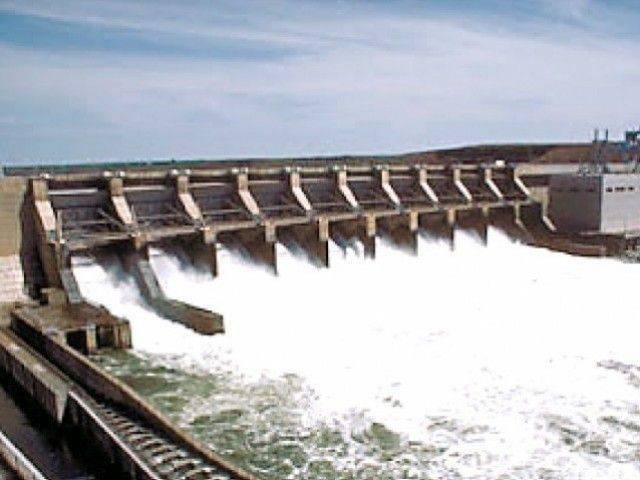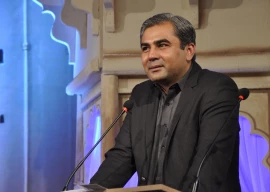
The headline “tariff” announced by Nepra for any project uses the framework of “Levelized Cost of Energy” (LCOE) — which one may assume is an “average” rate that the government must pay over the course of a multi-year concession. In fact, this is a rate which does not reflect the actual cost the government incurs each year of the relevant concession and penalizes high capex projects with low operating costs in favour of low capex projects with a high cost of operation. An impression has therefore been created that imported fuel projects have a lower cost of generation than hydropower projects.
A closer look at the break-up of these tariffs reveals another story. RLNG plants commissioned in Pakistan were awarded a 25-year concession with levelized tariffs of 6.6 cents (variable — based on the cost of LNG). Pursuant to these tariffs, the government acquires power at 6.9 cents during the first 10 years and at 6.1 cents in the following 15-year period (when the project debt would have been fully repaid). In comparison, a hydropower project operating under a 30-year concession with a similar levelized tariff of 6.6 cents would incur a cost of power of 8.5 cents for the first 10 years and only 3 cents in the ensuing 20-year period following the settlement of the project debt. Therefore, whilst the headline levelized tariffs are the same for both projects, the cost of one kilowatt every hour would be approximately $16,800 from RLNG versus $12,900 from hydropower, without accounting for fluctuations in global LNG prices. Over time, the power generated from hydropower becomes cheaper whereas it either remains the same or becomes dearer for imported thermal power.
In addition to the cost of generation, Pakistan’s energy sector suffers from a high dependence on imported fuels, which has contributed to the weakening of our currency and imbalances in our economy. In this regard, hydropower has unique benefits.
Approximately 70% of the cost of construction of a hydropower plant is incurred on locally produced goods and services such as cement, steel and labour, unlike other sources of power where approximately 80% of the cost is spent on imports. Hydropower investment is fed back into our economy, usually in underdeveloped parts of the country, which acts as a catalyst for Pakistan’s economy, including the creation of local jobs. Furthermore, once a hydropower plant is constructed, it runs on indigenous resources and has no ongoing fuel cost, in contrast to RLNG plants which need regular imports in foreign currency.
Unlike any other form of power project open for investment in Pakistan, hydropower projects are being offered to investors under a Build, Own, Operate, Transfer (BOOT) model. Hydropower projects have a minimum life of 50 to 70 years, and after 30 years, their ownership transfers to the government free of cost. This represents long-term asset creation for the government and should alone be enough to justify a completely different incentive framework for the determination of tariffs for these projects.
Once under government ownership, the government can either elect to further privatise these assets or choose to benefit from effectively free of cost electricity. There can be no better examples of this in practice than our older projects like Tarbela and Mangla, which currently produce electricity at a negligible cost. In turn, these projects are subsidising the circular debt problem, otherwise being created by our reliance on imported fuels. Moreover, countries like Norway are still benefiting from hydropower projects that were built 120 years ago.
The widespread development of Pakistan’s renewable energy sector has been stalled under various pretexts. Towards the end of its term, the previous federal government apparently made a policy decision to only award new renewable energy concessions via competitive bidding, but no policy was promulgated in this regard. Leaving aside the negative impact this mid-way change in policy has had on investor confidence, it appears that the new government will complete this policy direction and a new Renewable Energy Policy 2019 is rumoured to be published soon.
Given the strategic importance of Pakistan’s hydropower resources and the unique benefits their development will bring, I would argue that hydropower projects be treated differently to other renewable energy projects. Whilst competitive bidding may make sense for technologies such as solar and wind, it is likely to lead to the premature death of the small/medium hydropower sector in Pakistan. There are very few variables one needs to consider while assessing the viability of a particular site for a solar or wind project. Taking solar as an example, one needs to assess the amount of solar irradiation available at a site, cost of land, and distance from the grid station. Such data is widely available, and professional assessments can be carried out at very low costs. In contrast for hydropower, the variables are many, including geological issues, social issues or technical issues. In order to fully assess a project, detailed feasibility studies need to be conducted. While these are all costly and time-consuming activities, failing to conduct them properly will lead to uncertainty about the viability of the project and therefore a higher estimated cost. It is highly unlikely that any investor will put this magnitude of resources at risk, simply for the opportunity to participate in a bidding process.
For small to medium hydropower projects, where some of the common environmental and social impacts of big hydropower construction are largely mitigated, I would argue that a better approach is to announce an upfront tariff where the government can set the direction as to what price it finds economically viable and allow the developers to find sites which fit within that price target. A clear goal post highly incentivizes developers to find ways to make projects viable. Such clarity may be the catalyst that the Pakistani small to medium hydropower sector needs where over 30,000MW of undeveloped potential exists. Other countries in the region, including India, Sri Lanka, Laos and Vietnam have been able to mobilise local developers to develop numerous hydropower projects.
Hydropower projects have long gestation periods before they come to fruition. Only those investors who take a long-term view of the economy will have the appetite to put significant capital at risk to turn these projects into reality. The more certainty that the government can provide such investors, the more likely it is that these assets are developed for the government in the private sector. One of the most obvious ways for the government to reduce the long-term cost of power in Pakistan is to develop our hydropower assets on a war footing. Policies must be formulated to ensure this takes place.
Published in The Express Tribune, September 5th, 2019.
Like Opinion & Editorial on Facebook, follow @ETOpEd on Twitter to receive all updates on all our daily pieces.





























1714024018-0/ModiLara-(1)1714024018-0-270x192.webp)









COMMENTS
Comments are moderated and generally will be posted if they are on-topic and not abusive.
For more information, please see our Comments FAQ